Like most things in South Africa, language is complicated. And I’m not just talking about the eleven official languages, none of which is an actual language known known as “South African.”
Afrikaans, English, Ndebele, Northern Sotho, Sotho, Swazi, Tsonga, Tswana, Venda, Xhosa and Zulu: nearly everybody who grew up here speaks more than one. Beyond these are the many languages of South Africa’s African immigrants from countries like Malawi, Zimbabwe, and the Democratic Republic of the Congo, who generally speak their own indigenous language and that of the European power that once colonized their land.
Language here can be politically charged and divisive—the lingering baggage of colonialism and apartheid. But it can also be unifying, as most South Africans view the “new” national anthem—a hybrid rewritten after apartheid fell, with lyrics that pull from five official languages. Likewise, South African slang is a thing of verbal beauty. Steeped in many languages, it is an evolving melting pot of fantastic chirps (that’s one example) and expressions.
As you can imagine, this complexity could turn a restaurant kitchen, where language is vital, into chaos. There are many opportunities for error if you can’t effectively talk to each other. This is why, across most of South Africa, English is the language of kitchen communication—apart from the choruses of oui that follow a chef’s orders on the line. While English is the common denominator, it by no means defines kitchen culture. In kitchens, actions and attitudes speak louder than words.
Overheard in the Kitchen:
Jump in on two oysters, please.
Liam Tomlin, an Irish chef who adopted South Africa as home, speaks only English. Tomlin is one of South Africa’s most respected chefs and restaurant employers, and his food is renowned. He has four Cape Town restaurants—Chefs Warehouse, Chefs Warehouse Beau Constantia, Thali, and Chefs Warehouse Maison—and leads up the food team at Singita, a conservation company with luxury safari lodges in South Africa, Zimbabwe and Tanzania. He oversees 170 employees in Cape Town, and two hundred chefs on thirteen different properties for Singita.
No chef I’ve met has international credentials like Tomlin, who’s lived or worked in nearly twenty countries. Born and raised in Dublin, he started in the industry at fourteen as a hotel pot washer. After a two-year cooking apprenticeship, he made his way to London and then to Zurich, where at age seventeen he got serious about his career.
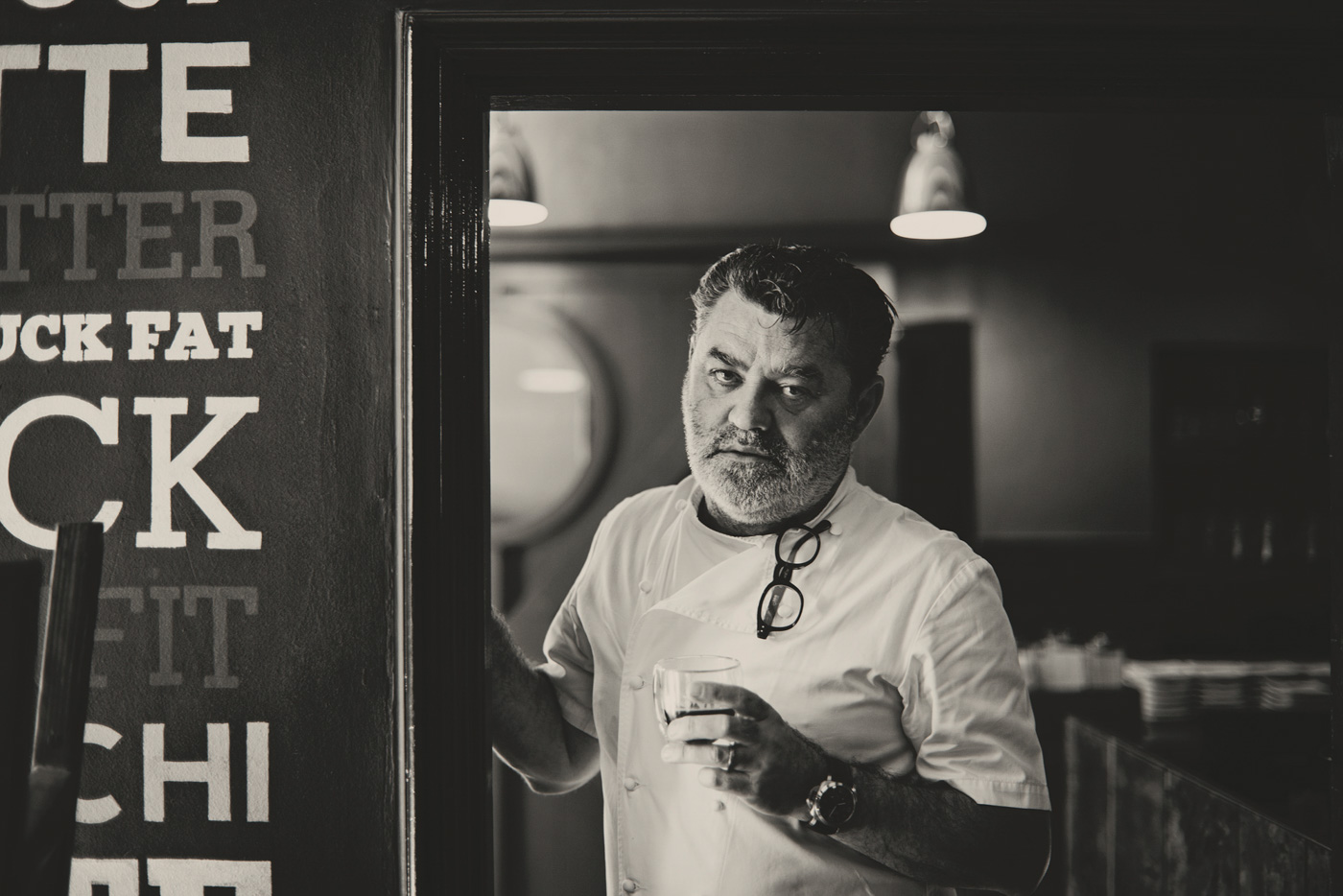

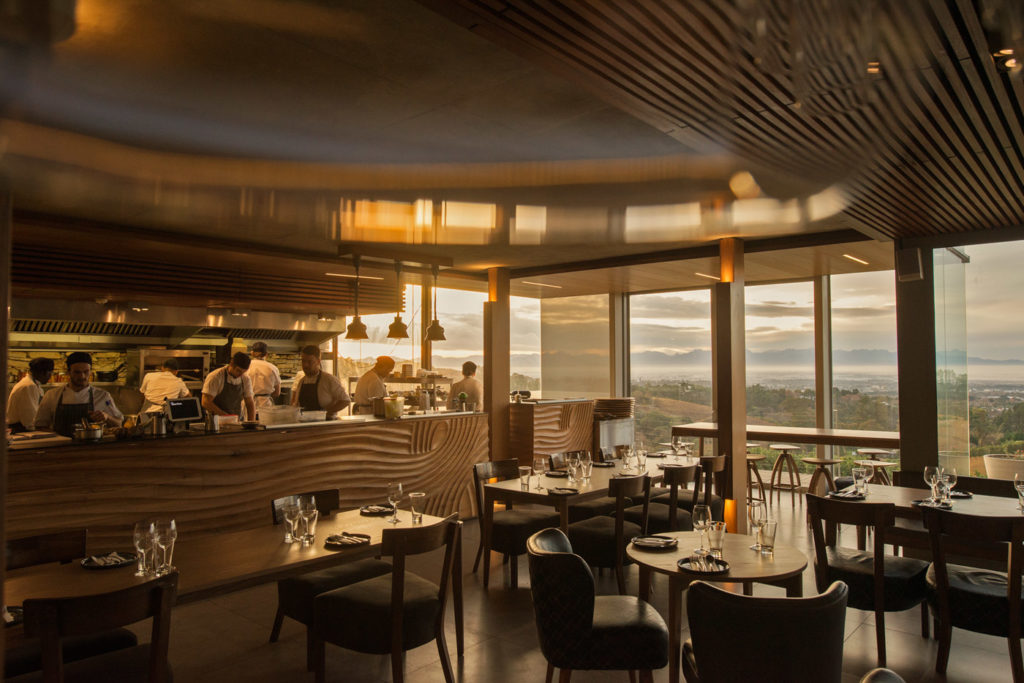
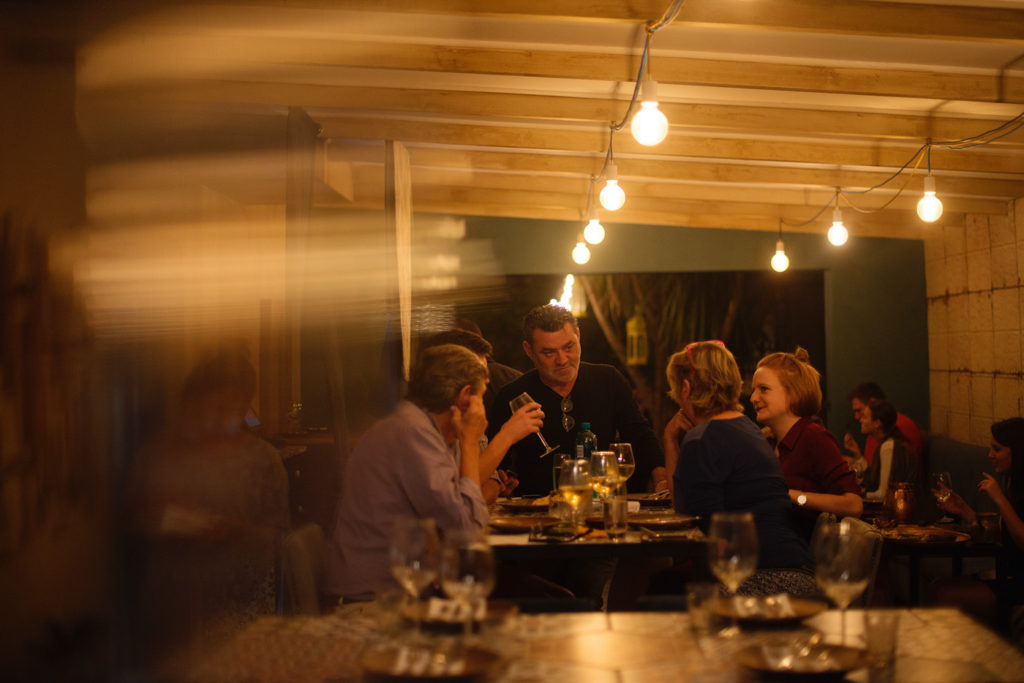

Tomlin subsequently worked in kitchens all over Europe and the United Kingdom, where he met Jan, his wife and eventual business partner. They left for Australia, where for fifteen years, Tomlin soaked up the influences of Australia’s Pacific Rim while building a restaurant empire. Shortly after his flagship restaurant closed, the Tomlins settled in Cape Town.
Tomlin is gracious—the unusual chef who can cook and also comfortably schmooze with guests at the door—and yet, he’s direct and no-nonsense about operations.
To Tomlin, it makes no difference where people come from. “That we have many different cultures working here is not just a South African thing; it’s everywhere,” he says. “That’s what makes it such a cool industry.” Speaking only English has never been an issue for him.
Some of his employees come from cooking schools. Some have no culinary education. Some are South African, some white, some black, some “colored” (the locally accepted catch-all term for people of mixed race, indigenous, and/or Asian slave heritage). Malawians, Zimbabweans and Congolese are also key team members. All are hard workers; if they aren’t, they don’t stay for long.
Tomlin’s restaurants serve seasonal produce-driven tapas. Chefs Warehouse on Bree Street, Cape Town’s vibey restaurant row, was his first. The Asian-inspired menu changes daily. On the day I visit, the team is plating dishes like trout with nikiri dressing, lime mayo, and pickled shiitake, and cob with ponzu escabeche, with wasabi and daikon.
Overheard in the Kitchen:
You guys on track?
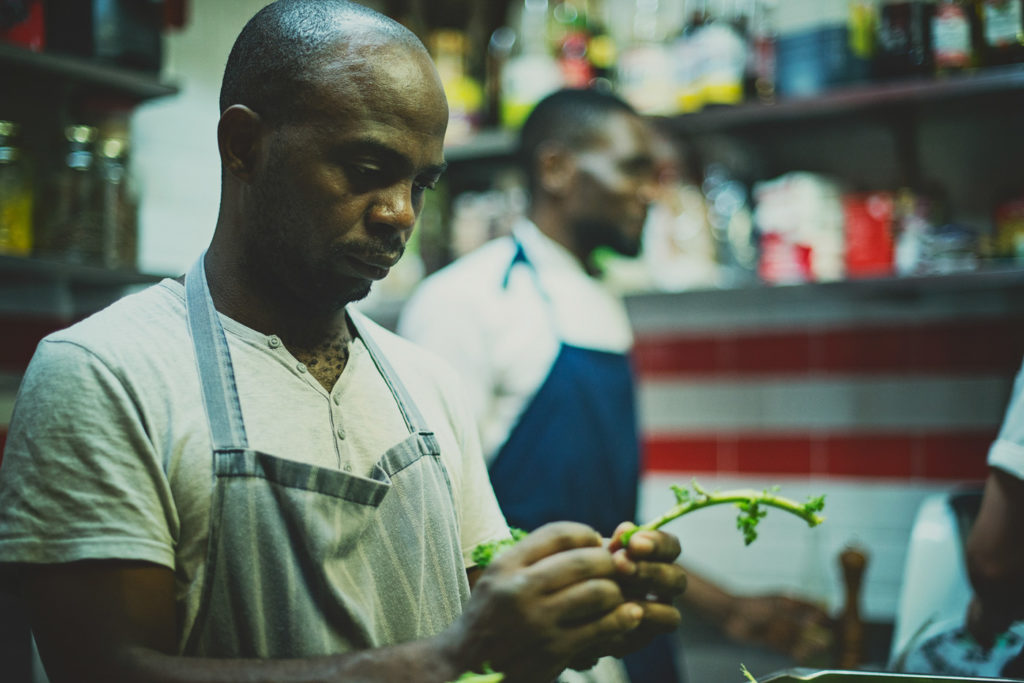
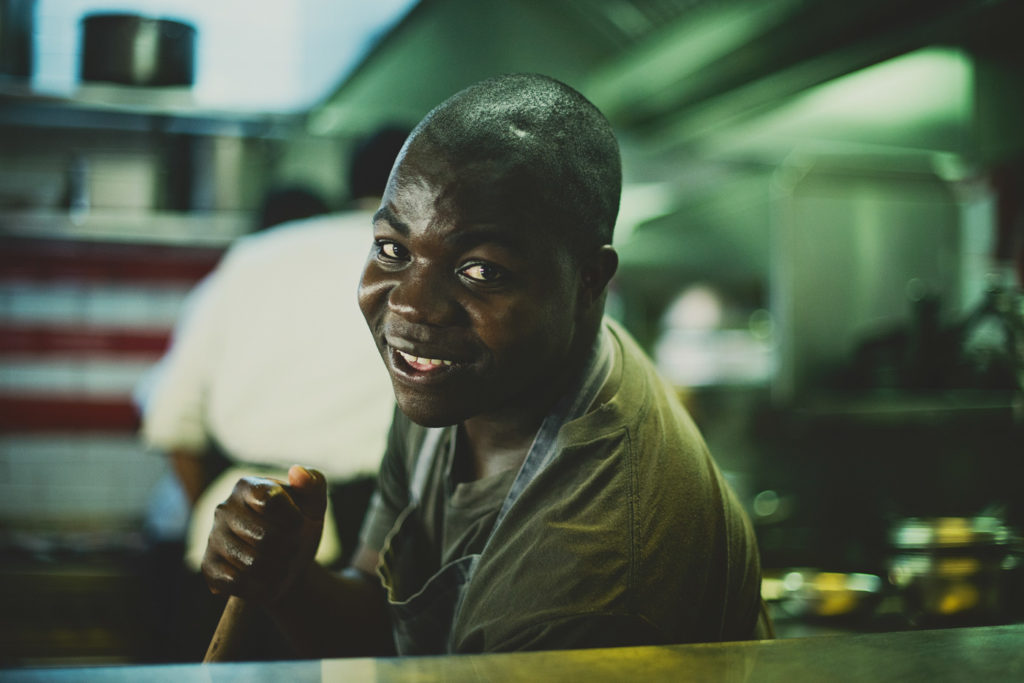
There’s a junior-senior hierarchy in Tomlin’s kitchens, but it’s still a fairly horizontal structure. All four share a culture of hard work and teamwork, which originates at the top through Tomlin himself. “You do your own prep, then jump in and help others when you’re done,” says Chefs Warehouse sous chef Nanda Cardoso. “We have lots of respect for each other. The scullers [dishwashers] help us out with things like peeling potatoes and onions. We help them out at the end of the evening with washing up.”
Across the pass from me during my visit is Nathanael (Nathan or Nate) Coe, another sous. He’s from Mitchells Plain on the Cape Flats. Afrikaans is his first language; here he speaks English. Next to him, shredding stewed goat meat for a saag gosht goat curry, is Pitsi Mohoto, a twenty-four-year-old from Johannesburg who speaks English, Sotho, Zulu and Afrikaans.
Like many of Tomlin’s chefs, Coe has spent time at the Singita properties. “I went to explain what Liam wants to the chefs who are working there,” he says. This cross-pollination works magic for his team. The Cape Town chefs get a ticket out of town and opportunity to work and play in either the Kruger National Park or the Serengeti. The Singita chefs get the attention and support of highly skilled and culinarily sophisticated mentors. Sometimes they’re sent down to Cape Town to cross-train in Tomlin’s restaurants. In the process, everybody learns a little more about each other’s cultures.

Overheard in the Kitchen:
Kahulesa! (Xhosa for “hurry up”)
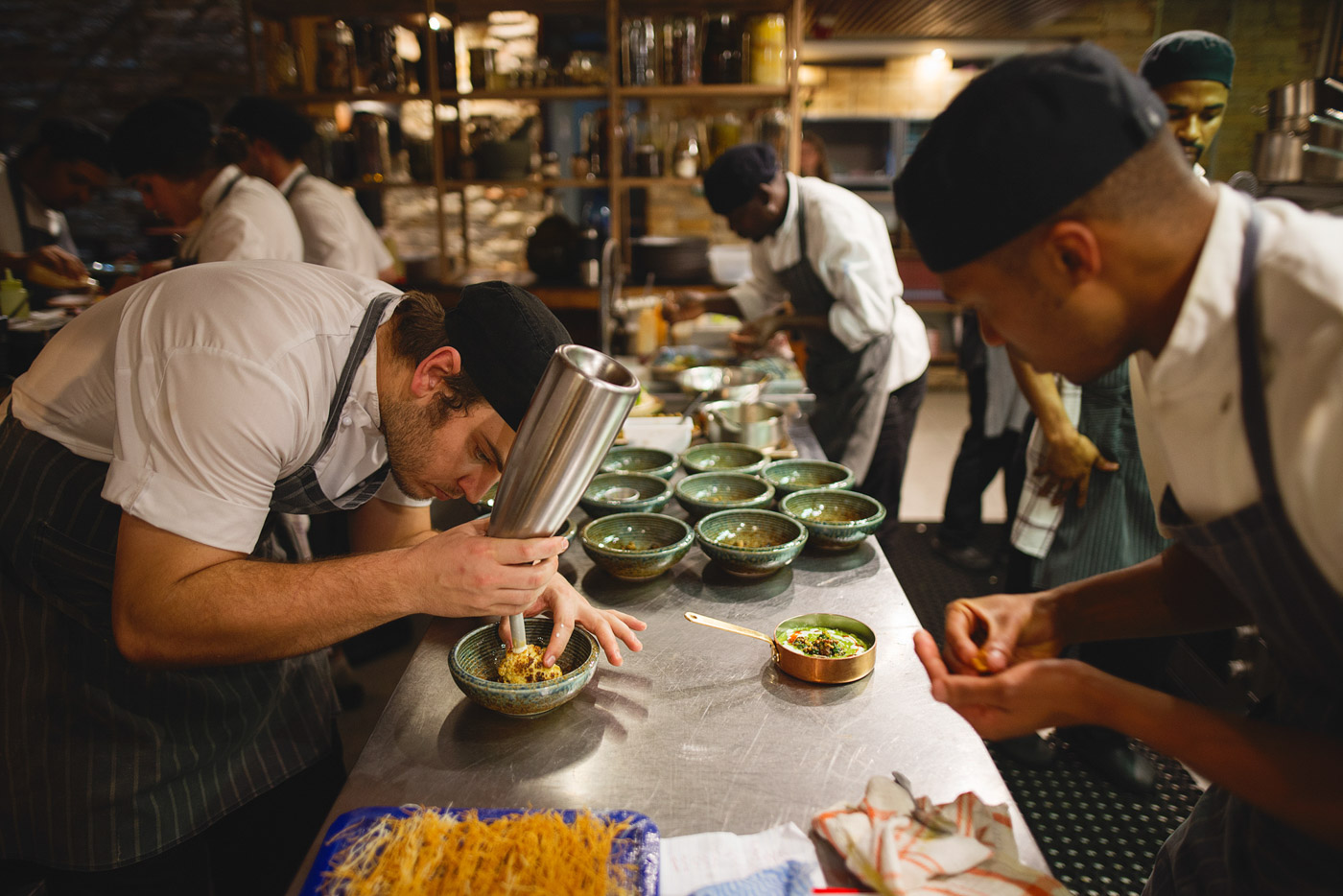
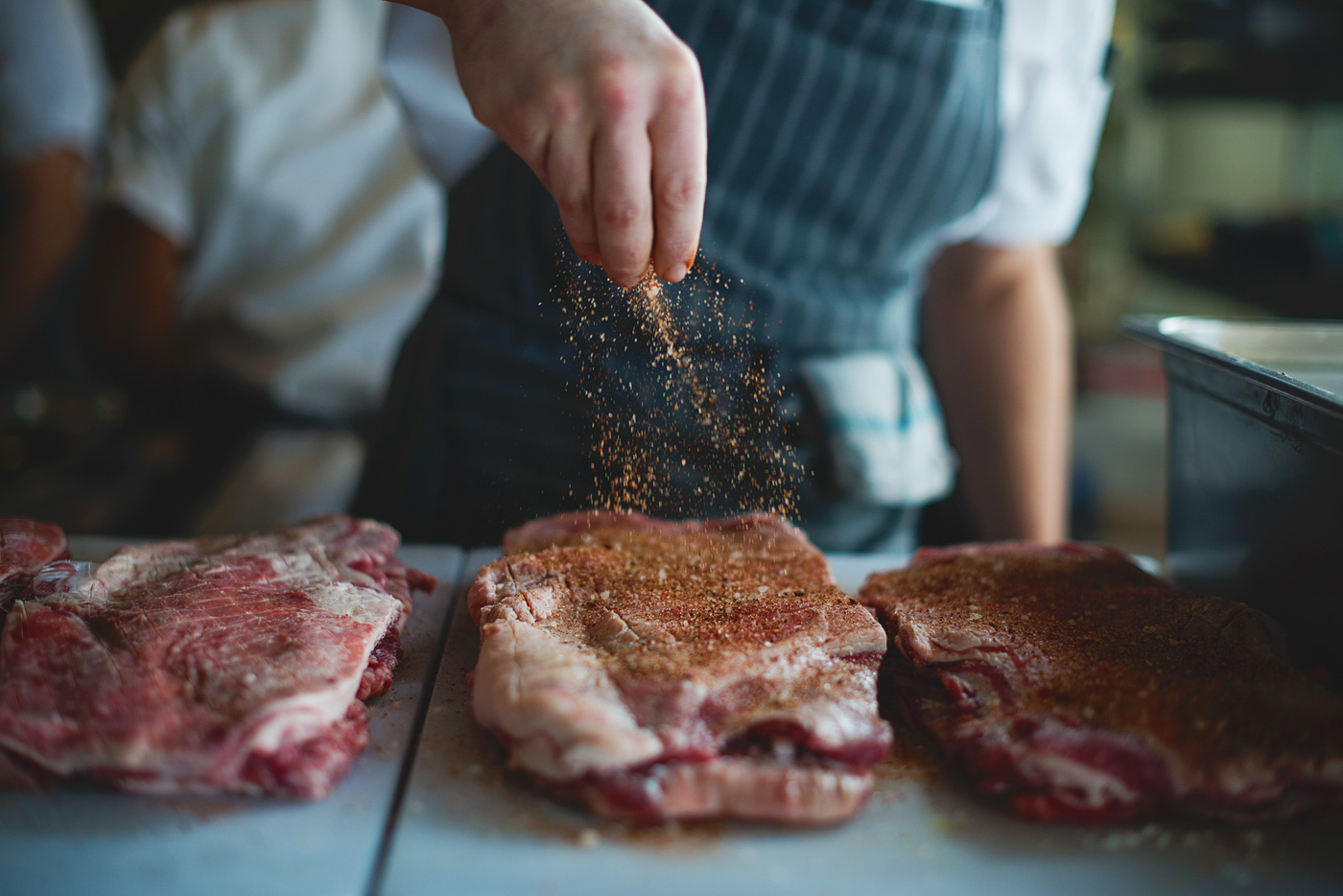
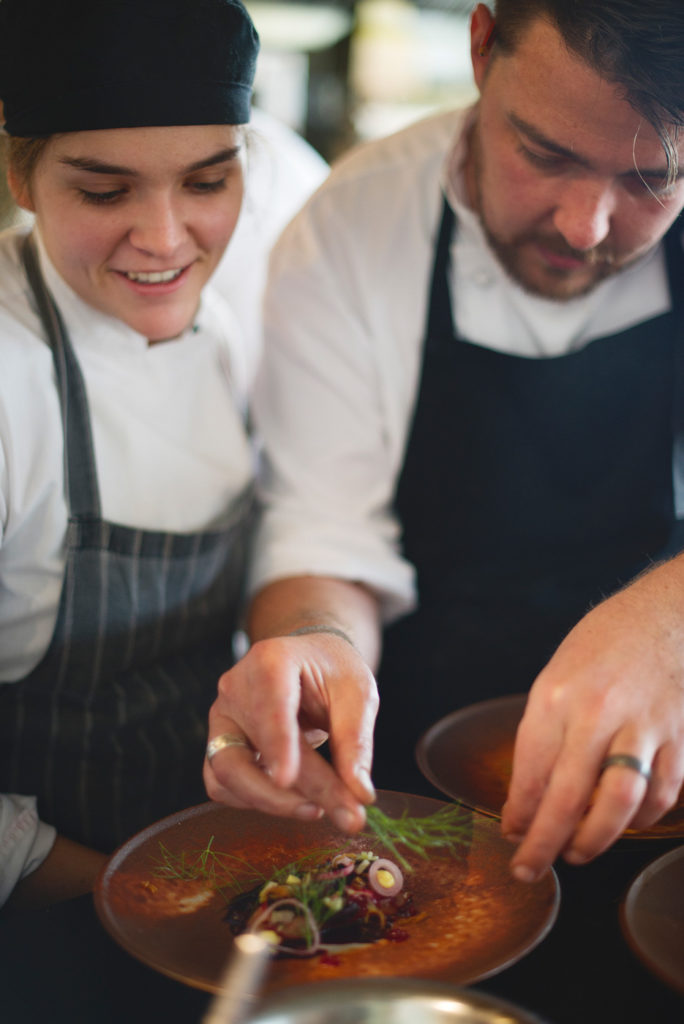
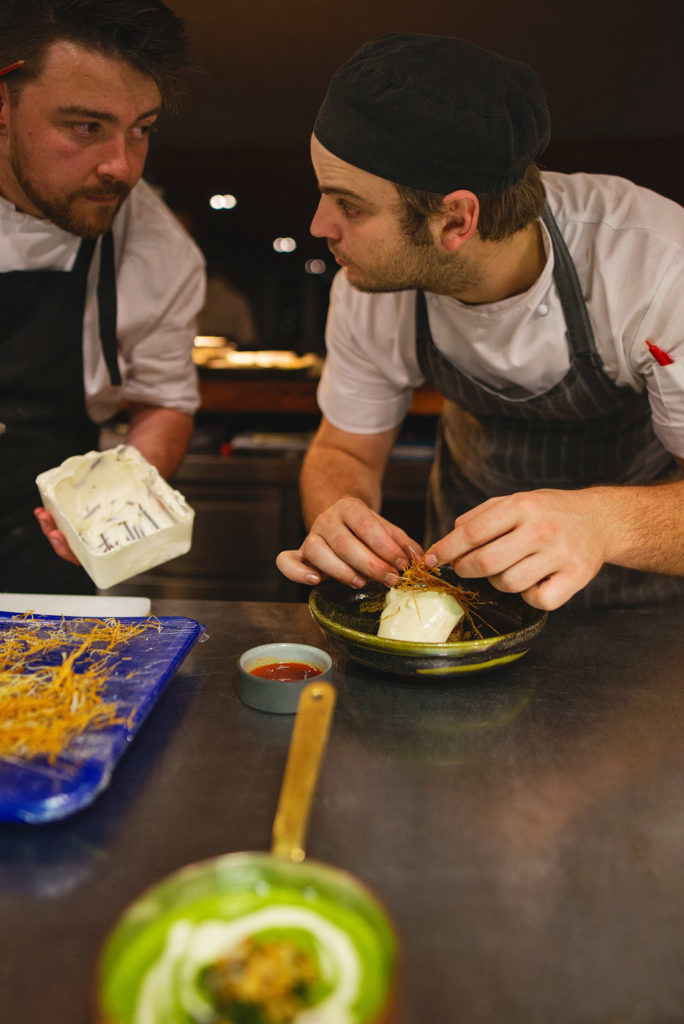
Tomlin oversees the Singita School of Cooking at Kruger (there’s a second school in Tanzania). Both have intensive one-year professional programs which pull exclusively from the reserves’ outlying previously disadvantaged communities. Acceptance is competitive; the program takes ten out of about four hundred applications every year. All students are fluent in English as well as their home language, which in the Kruger is Tsonga. Graduates work at the Singita reserves.
Chef’s Warehouse Beau Constantia is in a striking contemporary glass building on a wine estate at the top of Cape Town’s Constantia Valley—which was also South Africa’s first wine-producing region.
The view from the open kitchen is jaw-dropping—a far cry from the usual dark, often subterranean space that is a restaurant kitchen—yet at 9:30 a.m., all eyes are on cutting boards. Chef Ivor Jones, who is Tomlin’s partner at Beau, is de-stemming a huge bowlful of flat-leaf parsley for a green risotto that will be enriched with smoked bone marrow and red wine.
Working behind the pass is James Chirwa, a demi commis chef who has been at Beau since it opened. He’s a Malawian immigrant (home language: Chichewa). In a previous life, he worked as a gardener and housekeeper. This is his first kitchen job after hospitality training school. He’s quietly setting up his station, cutting thin slices of sourdough for croutes that will be toasted in beef fat. “James is so determined to do well, to prove himself in the kitchen,” says Jones.
Overheard in the Kitchen:
How are we getting on, guys?
Next to Chirwa is sous chef Jason Farnworth, a native English speaker who rapid-fire lists off the ingredients in a smoked entrecôte appetizer, all while perfectly slicing yellowtail for a sashimi dish. “Let’s get into the service, please,” says Jones.
Beau is one waitress short, and there’s a problem with the communication from the computer to the kitchen printer. Jones is reading orders from handwritten tickets and there’s a major “dietary” (a customer who’s arrived with a list of about twenty food allergies). One large table has just ordered four plates of oysters.
Meanwhile, Farnworth is assisting the lesser experienced Chirwa with plating up four entrecôtes.
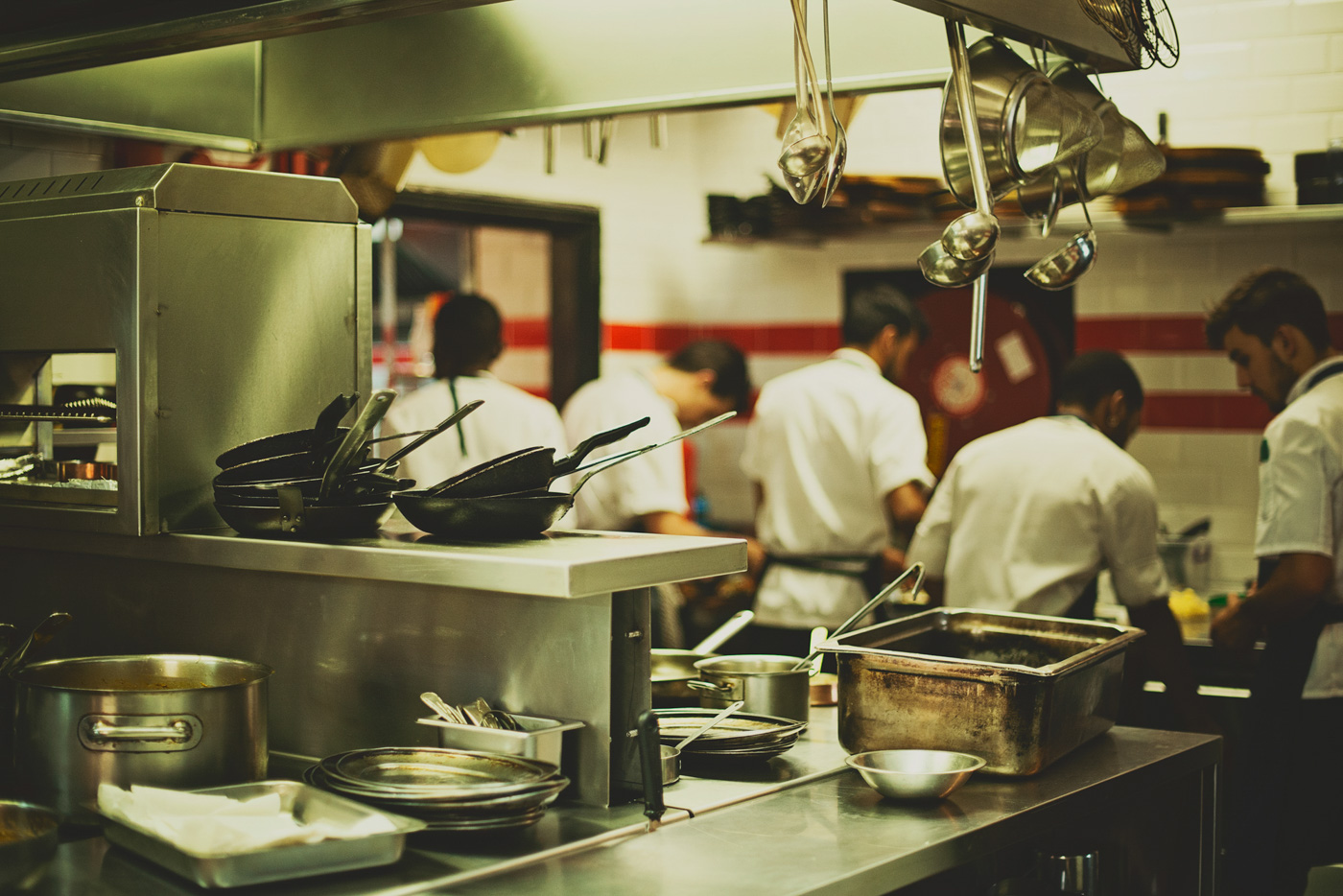
Overheard in the Kitchen:
Do you do buttermilk first? And then three dollops of avo?
It’s tense, but everyone is working together. Cutting through the heat and the craziness of a challenging service is Jones’ light-hearted, often funny prodding. “I love it when you tell stories…I can’t even make a risotto in one and a half minutes!” he says to one of the chefs.
Between lunch and dinner, there is staff meal, which is high quality at all Tomlin’s restaurants. We eat lamb moussaka, made with long-cooked trimmings from the week’s prep. It’s outstanding. We sit outside on a long bench in a narrow space behind the restaurant and a storage building. This is precious relaxation time, and there is more eating than talking.
“These people spend more time with us than with their families,” says Tomlin about his staff. “I see them as a second family.” This is the major meal of the day for most of his employees. It’s got to be good.
Overheard in the Kitchen:
I need two parathas and two tandoori setups, please.
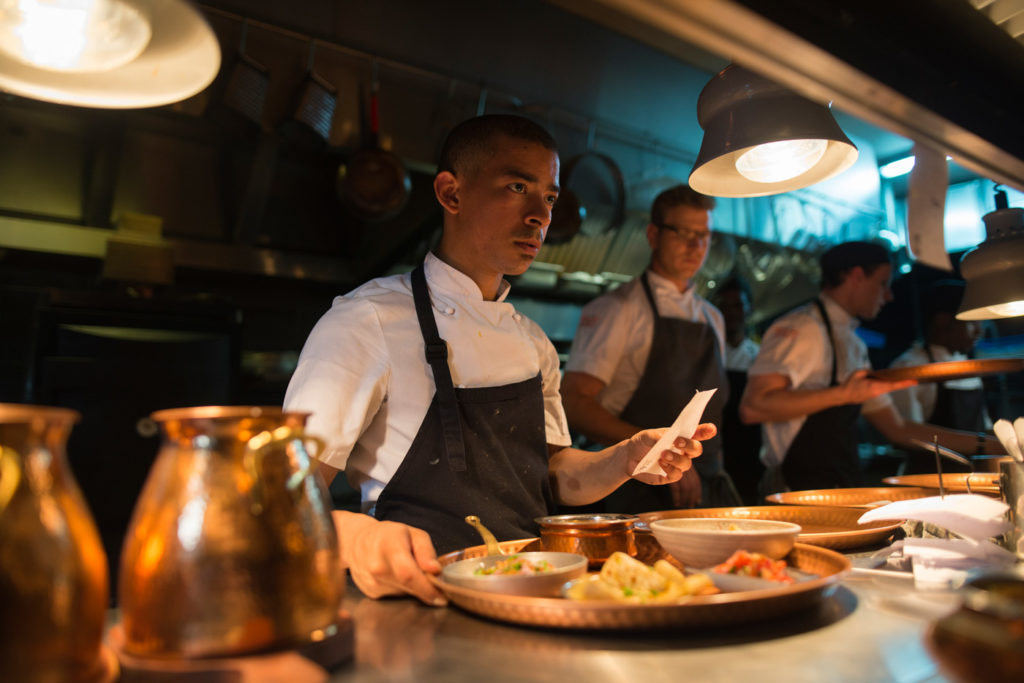
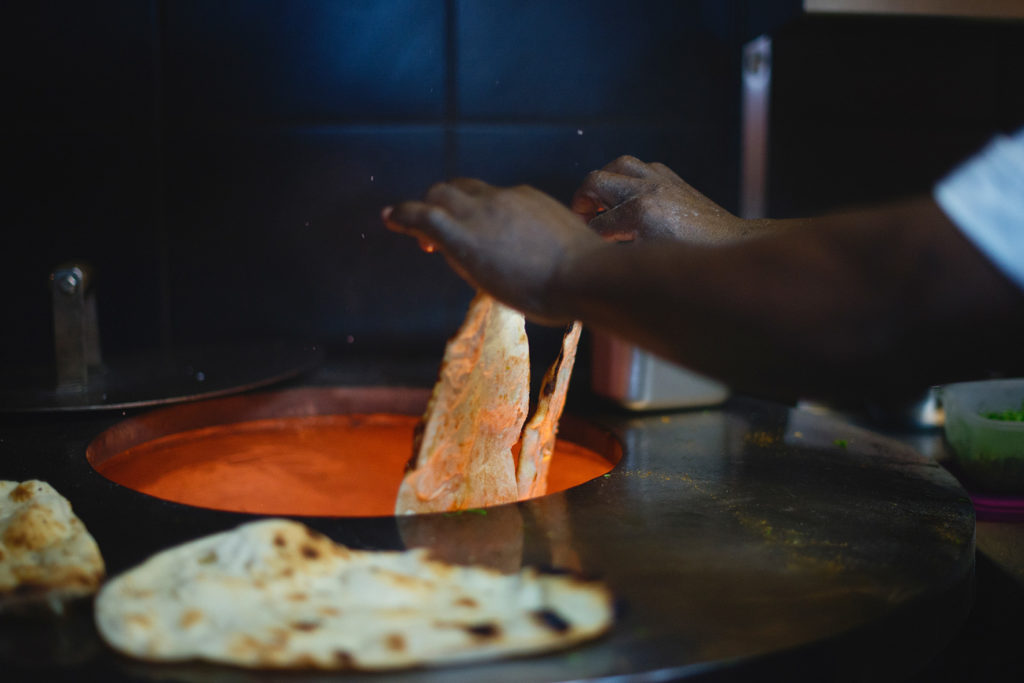
At Thali, Tomlin’s Indian tapas restaurant, it is Chef John Van Zyl’s second to last night before he leaves his job to travel through Spain. A veteran of Tomlin’s restaurants, he opened Thali with him a year and a half ago. Tomlin had been to India a few times and wanted to do a fun contemporary take on Indian food in a more design-oriented space—“Something with a little theatre and with the same high-quality produce we use at the other restaurants.”
Right now, the theater’s in the smoke-wreathed Tandoori chicken skewers, which are skewered into a tall metal pot over red-hot coals that have been drizzled in oil for the smoke effect.
There are no Indians working here. But there is Byron Makubaza, chef de partie from Zimbabwe who tells me he is living his dream at Thali, as well as Malawian Patrick Kumwenda who works the tandoor. There is also Tiisetso (Double T) Sebola from South Africa’s Limpopo province, and Marco Cardoso, a Capetonian who is a native English speaker.
“It is not fair to speak languages like Zulu or Afrikaans in front of people who don’t understand them,” says Van Zyl. “So we speak English.”
“You need to be tough to fit in here,” he says. But softening the toughness is banter. “It’s a fun way of breaking each other down and what happens when you spend sixteen hours a day together.”
Overheard in the Kitchen:
It doesn’t matter. Let’s just have a good day.
Yes, doing a job well—perfectly, in fact—matters most. But this doesn’t mean words aren’t important. The way I’ve experienced kitchen life, each individual kitchen’s quirky banter and nomenclature are just as important as the essential commands, no matter where you are and what language you are speaking. Which is why a call for riso, rather than risotto, puts a smile on my face.





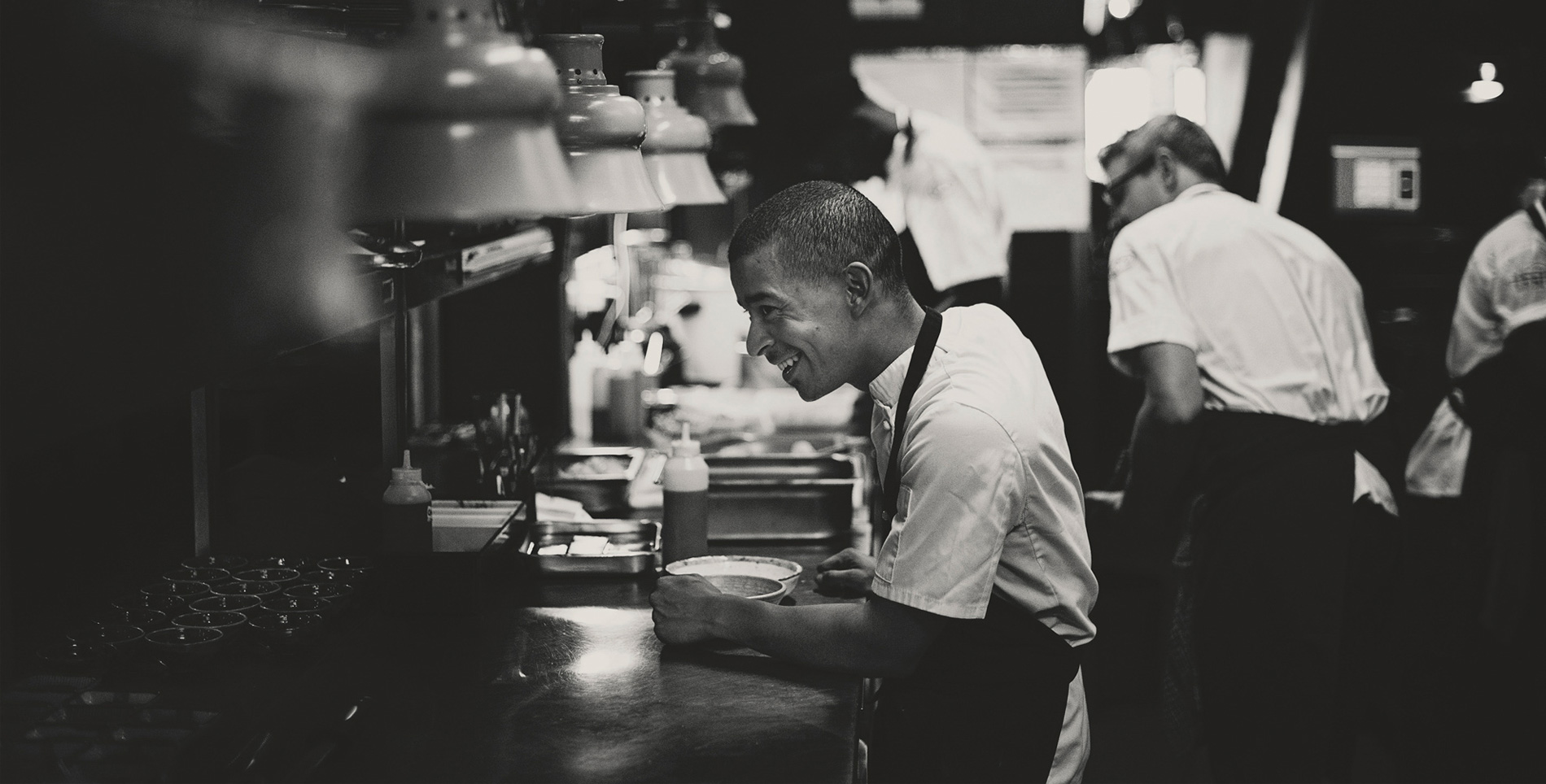

Our comments section is for members only.
Join today to gain exclusive access.